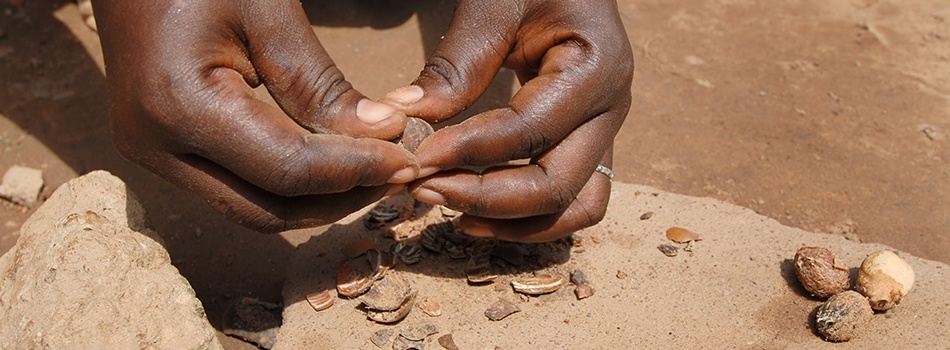The story behind our organic shea butter
At Green People we choose the finest natural and organic ingredients to use in our pure, nurturing skin care. With its naturally nourishing and moisturising qualities, Shea butter makes the ideal ingredient in organic beauty products.
Our fairly traded Shea butter is collected, naturally processed and sold by a women’s co-operative from a rural community in Ghana.
In this blog post, not only will we be discussing the benefits of Shea butter, we will be looking at how the production and sale of fairly traded Shea butter has benefitted a rural community in Ghana.
What is Shea butter?
Shea butter (Butyrospermum parkii) is derived from the nuts of the Shea or Karite tree which grows in sub-Saharan Africa. We get our certified organic Shea butter from a women’s co-operative in northern Ghana. This fairly traded project provides employment, a fair wage and good working conditions for a community of 600 women who have the capacity to produce up to 150 tonnes of butter each year.
Shea butter facts:
The Karite tree starts to bear fruit when it is 10-15 years old and reaches full production at 20-30 years. It can then continue to produce nuts for the next 200 years
The tree produces an average of 15-20 kg of fruit a year, yielding 6-8 kg of nuts.
In Africa, both the oil and butter extracted from the nut are used as foods and as medicines.
Evidence shows that Shea butter has been commercially produced since at least the 14th Century.
How is our Shea butter produced?
Handmade using traditional methods, the production process does NOT use synthetic chemicals or solvents. Firstly, the nuts are gathered by hand from around the base of the Karite trees (they are never plucked from the trees) which have been growing in northern Ghana for hundreds of years. In order to meet organic standards, 30% of the nuts are left on the ground so their nutrients can be absorbed back into the soil and to allow germination of new seedlings
Before the nuts can be processed, they are sorted to extract any bad quality nuts and left in the sun to dry, allowing for the natural oils to be produced. The soft outer skin of the nuts is removed through a parboiling process and then the nuts are taken to the production hut, which contains a small machine for grinding the nuts. The ground nuts are then roasted outside over an open flame in a large clay pot.
The roasted ground nuts go through a simple milling process using a small machine where the oil is squeezed from the nuts to make a dark brown creamy liquid - very similar in consistency and colour to melted chocolate. In fact, the indication of a good quality Shea butter is that it will smell of chocolate.
One of the essential aspects of producing excellent quality Shea butter is kneading it by hand for up to two hours.
Once cooled, the result is a creamy white, more solid Shea butter which is ready to be weighed, packed and collected by trailer, ready for export. Nothing is added and nothing is taken away. This really is nature at its best.
Benefits of Shea butter in skin care
Shea butter is an excellent moisturiser and one of nature’s miracle beauty ingredients. It transforms dryness, helps repair damage, reduces wrinkles and soothes irritation, leaving your skin feeling soft and smooth.
Shea butter also offers UV-protection and has strong anti-inflammatory properties. Naturally occurring antioxidants help fight free radicals to keep skin healthy and avoid premature ageing.
Shea butter is used to treat many different skin conditions. It is also reputed to ease aches and pains and is used for giving massage, especially for babies.
We use organic Shea butter as a key ingredient in our Organic Babies products for the rich nourishing, protecting and moisturising properties that it provides. It is non-greasy, absorbs easily into the skin and is suitable for all skin types, including sensitive and eczema-prone.




